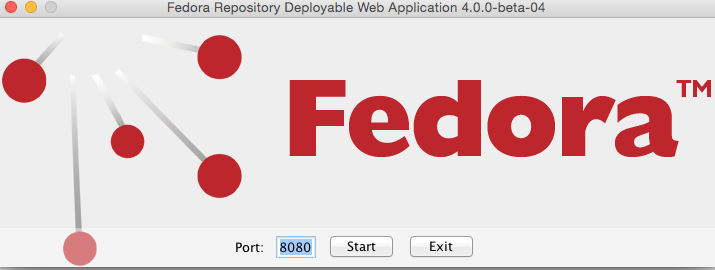This document is a guide to getting up and running with Fedora as quickly as possible.
Out of the box
If you are looking for scripted deployments, please take a look at Fedora's Deployment Tooling.
System Requirements
Installation
There are two primary ways of deploying Fedora 4. The first, One-Click Run, is an easy way to get Fedora 4 running to test out the basic features. The second, Deploying Fedora 4 Complete Guide, is the approach to be used in production installations.
One-Click Run
- Download the latest executable webapp "one-click-run" from Downloads
Either double-click on the download, or run the following command to start Fedora 4
Once Fedora 4 is seen to be running at the following URL, start exploring the Feature Tour
Note, port 8080 is the default. Replace that port number in the above URL if you used a different value.
Servlet Containers
Alternatively, instead of deploying Fedora 4 via the "one-click run", the Fedora 4 web-application can be installed by dropping the WAR file into a servlet 3 container, such as Tomcat 7 or Jetty 8.
For details on installing Fedora 4 to those containers, see the
Deploying Fedora 4 Complete Guide guide.
Next Steps
Once Fedora 4 is running,
- Explore the Feature Tour
- Explore the web-application Application Configuration
- Explore enabling repository asset Authentication and Authorization
- Explore setting up an External Search index
